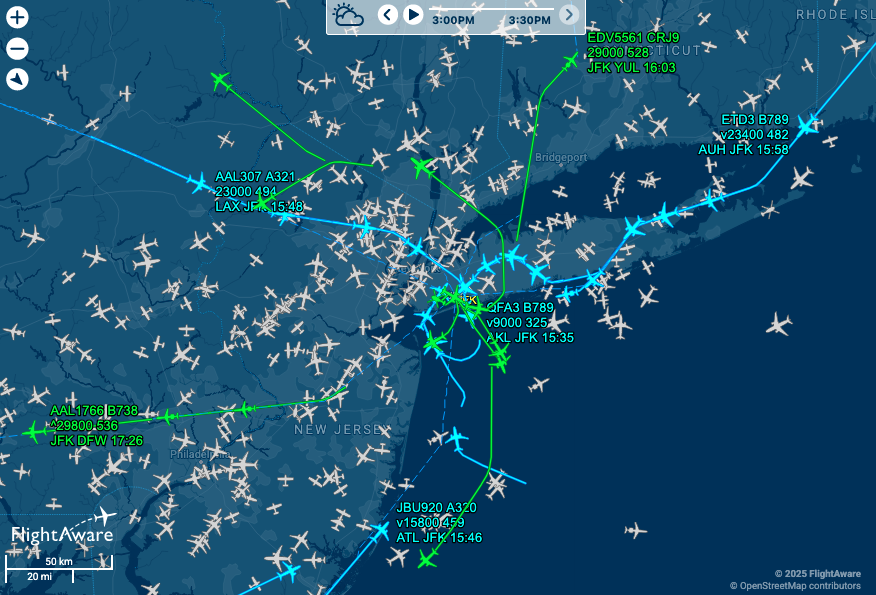Air Traffic Controller Shortage Grows Despite $145K Salaries

America’s air traffic controller shortage is worsening during the government shutdown—despite six-figure salaries reaching $145,000 a year. The Federal Aviation Administration (FAA) faces mounting staffing challenges as thousands of controllers are required to work without pay, prompting sick calls, fatigue, and growing concern over flight safety and delays nationwide.
Transportation Secretary Sean Duffy confirmed Monday that air traffic controller staffing is down as much as 50% in some areas, forcing reduced operations at major airports including Newark, Denver, Phoenix, and Los Angeles. At Hollywood Burbank Airport, the control tower was left unmanned for nearly six hours, from 4:15 p.m. to 10 p.m., while controllers from San Diego temporarily managed the airspace at a reduced capacity.
The FAA employs roughly 13,000 controllers and 50,000 TSA officers, both considered essential personnel who must report to work during shutdowns even without pay. The financial stress, combined with long hours and mounting workloads, has triggered an increase in sick leave and absenteeism, further thinning an already stretched workforce.
A Crisis Years in the Making
The shutdown has exposed a long-standing issue: the United States’ air traffic controller shortage predates this political standoff by years. As of May 2025, only two of 313 air traffic control facilities met FAA staffing targets. Nearly 91% of facilities operate below recommended levels, with at least a quarter of the workforce missing at 73 locations. Key hubs in New York and Long Island have been hit particularly hard, causing ripple effects across the national airspace system.
The shortage has coincided with a surge in “near misses”—incidents where aircraft come dangerously close to each other or vehicles on the runway. FAA data recorded over 1,750 runway incursions in 2024, highlighting the growing strain on the system. Experts warn that prolonged under-staffing, combined with mandatory overtime, increases fatigue and the potential for human error.
Why It’s So Hard to Hire Controllers
Becoming an air traffic controller isn’t easy. Candidates must be U.S. citizens under age 31, pass rigorous medical and security clearances, demonstrate strong English proficiency, and complete years of intensive training. New recruits spend months at the FAA Academy in Oklahoma City, followed by two to three years of on-the-job training before earning full certification.
The training process can take up to three years and is notoriously demanding. Roughly one-third of trainees wash out, according to former Transportation Department Inspector General Mary Schiavo, who described the process as “rigorous, costly, and mentally exhausting.” Those who succeed can earn a median salary of $144,580 per year, according to the Bureau of Labor Statistics (BLS).
Controllers typically retire by age 56, meaning the FAA must continuously replenish the workforce with younger candidates. However, years of hiring freezes, pandemic delays, and an aging workforce have made it difficult to fill the pipeline.
Pay Is High, But the Pressure Is Higher
While air traffic controllers enjoy strong compensation and job security, the role remains among the most stressful in the federal workforce. Controllers routinely work six-day weeks and 10-hour shifts, often rotating between overnight and early-morning schedules. Mental fatigue, high responsibility, and public scrutiny make retention difficult—even with six-figure salaries.
Despite these challenges, demand for controllers is expected to grow 3% between 2023 and 2033, creating an estimated 2,200 openings each year, according to BLS projections. The FAA has ramped up recruitment efforts, targeting Gen Z candidates through social media campaigns and partnerships with aviation schools.
Still, the government shutdown underscores the fragility of the system. With controllers working unpaid and morale waning, flight delays and cancellations are rising. Until Congress restores funding, America’s skies may remain safe—but only because of the dedication of overworked professionals keeping them that way.
Related News: https://airguide.info/?s=FAA, https://airguide.info/category/air-travel-business/travel-health-security/
Sources: AirGuide Business airguide.info, bing.com, yahoo.com
